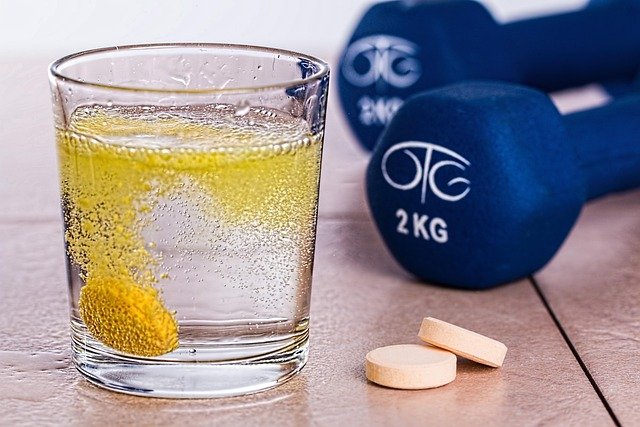Using biomarkers and tracking to personalize routine choices
Personalizing daily routines using biomarkers and practical tracking helps you understand how nutrition, sleep, movement, and stress affect energy and recovery. This article explains how simple data points can guide adjustments to hydration, diet, circadian habits, and mindfulness practices to improve resilience and overall wellness.

Using small, consistent measurements—biomarkers from labs, wearable data, and simple logs—you can tailor daily choices to how your body actually responds rather than relying on one-size-fits-all rules. Regular tracking clarifies patterns in energy, appetite, sleep quality, hydration status, and recovery from activity. Over weeks, these data points reveal trends that help prioritize changes to diet and movement, support circadian alignment, and reduce stress-related disruption. This practical approach focuses on gradual, evidence-aligned adjustments that improve resilience without dramatic or speculative claims.
This article is for informational purposes only and should not be considered medical advice. Please consult a qualified healthcare professional for personalized guidance and treatment.
How do biomarkers guide routine choices?
Biomarkers—measurable indicators such as fasting glucose, HbA1c, lipid panels, inflammatory markers, cortisol, or basic hormone tests—give objective insight into internal function. For routine personalization, look for actionable markers: blood glucose responses guide meal timing and carbohydrate choices; resting heart rate variability (HRV) from wearables can show recovery needs; and inflammatory markers may indicate the need for dietary or sleep adjustments. Use trends rather than isolated results: repeated measurements help separate random variation from persistent patterns that merit routine changes.
How can nutrition and diet be personalized?
Tracking nutrition alongside biomarkers connects what you eat to measurable effects on metabolism and appetite. Food logs, paired with intermittent glucose monitoring or post-meal glucose checks, can identify which meals produce energy dips or cravings. Notice how different macronutrient balances affect satiety and performance. Small changes—timing protein earlier in the day, balancing fiber and healthy fats, or structuring meals around activity—can stabilize energy and appetite. Personalization means testing adjustments for several weeks and monitoring whether biomarkers or subjective energy improve.
How does sleep and circadian timing affect routines?
Sleep quality and circadian alignment strongly influence metabolism, stress, and recovery. Track sleep duration, timing, and subjective restfulness along with daytime energy and appetite. Biomarkers like morning cortisol patterns or sleep-stage data from wearables add context. Shifting routines to match your circadian preference—consistent bed/wake times, bright light exposure in the morning, and dimming lights at night—can enhance sleep efficiency and metabolic regulation. Small timing shifts often produce measurable benefits in daytime energy and reduced late-night appetite.
How should hydration and movement be tracked?
Hydration and movement are simple to monitor but impactful. Daily fluid logs, urine color or frequency, and weight trends can indicate hydration status, while step counts, strength sessions, and perceived exertion track movement adequacy. Biomarkers such as creatinine (for kidney context) or resting heart rate changes can complement behavioral tracking. Use movement to structure recovery cycles: lighter activity on days with low HRV or poor sleep, and higher-intensity sessions when biomarkers and subjective energy indicate readiness. Consistent, varied movement supports metabolism and resilience.
How can mindfulness and stress resilience be measured?
Stress and resilience show up in biomarkers and behavior: elevated resting heart rate, reduced HRV, disrupted sleep, and appetite changes can signal chronic stress. Tracking mood, perceived stress, and short mindfulness sessions provides behavioral data that pairs with physiological markers. Incorporate simple practices—breathing exercises, short mindful breaks, or structured relaxation—in response to stress signals and monitor whether HRV, sleep quality, or subjective tension improve. Over time, combining subjective logs with biomarker trends reveals which strategies build resilience most effectively.
What role do metabolism, appetite, energy, and recovery play?
Metabolism, appetite, and recovery are interconnected outcomes of routine choices. Regular monitoring—fasting measures, weight trends, hunger ratings, and performance metrics—shows how diet, sleep, and movement interact. Energy patterns across the day suggest where to place nutrient timing and rest: if afternoon energy wanes regularly, adjust meal composition or midday movement. Recovery indicators like HRV, sleep depth, and soreness inform when to reduce load. The goal is iterative refinement: test a tweak, track multiple measures for several weeks, and adopt the adjustments that consistently improve biomarkers and daily function.
Conclusion Personalizing routines with biomarkers and consistent tracking turns assumptions into measurable experiments. By linking objective markers to nutrition, sleep timing, hydration, movement, and stress management, you can make small, prioritized changes that support steady improvements in energy, metabolism, appetite control, and resilience. Emphasize trend observation over single readings, use short trial periods for changes, and integrate both subjective and physiological data to find routines that fit your body and lifestyle.





